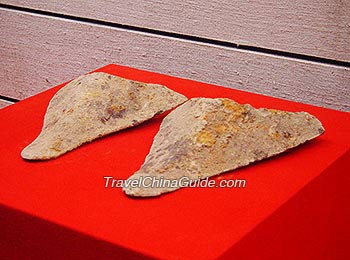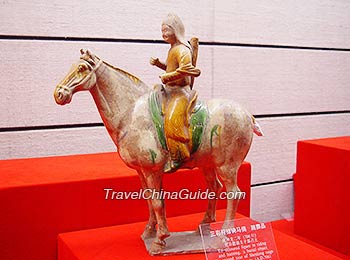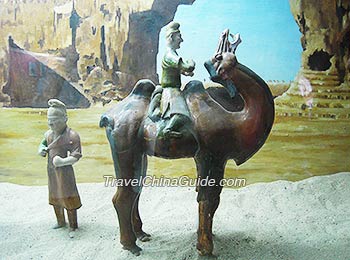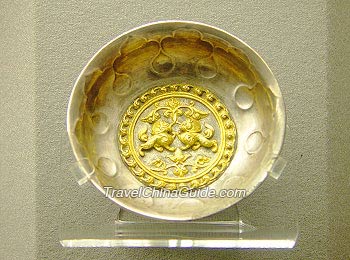Economy in Earlier Stage
The social economy in the earlier period of the Tang Dynasty underwent a rising process of recovery, development and prosperity. In particular, under the Zhen Guan Reign and the heyday of Kaiyuan, the national economy reached an unprecedented advanced level.
Agriculture
Since the collapse of the Sui Dynasty (581 - 618), productivity had been severely damaged and the national economy was in paralysis. After the Tang Dynasty reunified the whole nation, Emperor Kao Tsu paid much attention to develop agriculture and successively implemented a series of reforms, such as Juntian Zhi (Land Equalization System), and Zuyongdiao System. In this way, the peasants' burden was lessened and production efficiency was improved. As a result, farm tools and agricultural technique were improved. In addition, many irrigation works were completed soon after the foundation of the Tang Dynasty, which contributed to the rapid development of agriculture in Zhen Guan Reign and the heyday of Kaiyuan. The economy was very great in power.
 | | Iron Ploughshare, Tang Dynasty | |  | | Tri-colored Glazed Pottery, Tang Dynasty | |
Handicraft Industry
Because of the great progress in agriculture, surplus labor appeared which spurred the handicraft industry. In all areas of technique, category, or industrial scale, the development of the handicraft industry in Tang Dynasty surpassed that of the previous dynasties. In particluar textile technology reached a fairly advanced level. The technique of silk making became refined and delicate. The ceramic industry also entered a new phase. Besides celadon porcelain, white porcelain and Tri-colored Glazed Pottery were also invented. Some other kinds of manufacturing, including papermaking, tea-leaf processing, metallurgical industry and shipbuilding also thrived in that period.
Commerce
Both the rapid development of agriculture and the handicraft industry provide impetus for the prosperity of domestic business and foreign trade. The main commodities included foodstuffs, salt, spirits, tea, medicine, textiles, gold or silver ware and some daily items. A large number of commercial cites sprang up, such as Lanzhou, Chengdu, Guilin, Hangzhou as well as the capital Chang'an (currently Xi'an) and the auxiliary capital Luoyang. Special markets were set up in those cities, in which a strict market order ran very well. Meanwhile, due to the opening up of the Silk Road in the Han Dynasty (206 BC - 220 AD), vast quantities of foreign merchants and envoys came to trade in China. This also promoted the development of the marine trade. At that time, Tang ships could traverse the Indian Ocean and reach the Persian Gulf. Merchant ships traded frequently between China and countries in Asia and Africa.
 | | Statues of Merchants along the Silk Road | |  | | Silver Bowl with Gilt Design of Two Lions | |
Economy in Late Stage
After the An Shi Rebellion, the economy of Tang Dynasty was seriously damaged. The previous Juntian Zhi and Zuyongdiao System were both destroyed. In order to cure the fiscal crises that had been caused by the rebellion and separatist regimes, a new policy called Double Tax System (named after the imposing times) was carried out. Imposing tax according to wealth, the Double Tax System helped resume the fiscal revenue and set a good example for later tax reforms.
The tumult of the rebellion caused residents in northern areas to migrate the South of the Yangtze River which brought a great amount of labor and advanced manufacturing technique to southern areas. Therefore, in later Tang Dynasty, the social economy of southern areas developed rapidly and soon replaced northern areas, becoming the national financial center. Agriculture and handicraft industry in southern areas were much more prosperous than that of northern areas. Meanwhile, many new commercial centers emerged not only in urban areas but also in suburban areas. What was more notable was that the earliest exchange system appeared in that period, showing that China's ancient commodity economy had entered a new phase.



